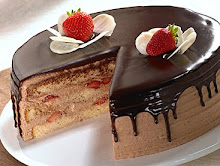The origins of the 'Kit Kat' brand stem back to 1911, when Rowntree, a confectionery company based in York in the United Kingdom, trademarked the terms 'Kit Cat' and 'Kit Kat'. Although the terms were not immediately utilised, the first conception of the Kit Kat appeared in the 1920s, where Rowntree launched a brand of boxed chocolates entitled 'Kit Cat'. The 'Kit Cat' product continued into the 1930s, when Rowntree shifted focus and production on strong assortment brands, 'Black Magic' and 'Dairy Box'. With the promotion of alternative products, the 'Kit Cat' brand eventually decreased and was eventually discontinued. The original four-finger bar was developed after a worker at the Rowntree York Factory put a suggestion in a recommendation box for a snack that "a man could take to work in his pack up". The bar launched on 29 August 1935, under the title of 'Rowntree's Chocolate Crisp' (priced at 2d), and was sold in London and throughout Southern England.
The product's official title of 'Rowntree's Chocolate Crisp' was renamed to 'Kit Kat Chocolate Crisp' in 1937, the same year that 'Kit Kat' began to incorporate 'Break' into their recognisable advertising strategy.The colour scheme and first flavour variation to the brand came in 1942, owing to World War II, when food shortages prompted an alteration in the recipe. The flavour of 'Kit Kat' was changed to 'dark', and the packaging abandoned its 'Chocolate Crisp' title, and was adorned in blue. After the war, the title was altered to 'Kit Kat' and resumed its original milk recipe and original red packaging.
Due to a widespread success in the United Kingdom, 'Kit Kat' picked up global supplying and recognition in the 1950s when the brand was shipped to Australia, New Zealand, South Africa and Canada. During the same decade, Donald Gilles, the executive at 'JWT London', created the iconic advertising line "Have a Break, Have a Kit Kat". The brand further expanded in the 1970s, where Rowntree created a new distribution factory in Germany to increase European demand, and established agreements to distribute the brand in the USA and Japan, through the Hershey Corp company and Fujiya company, respectively. In June 1988, Nestlé acquired 'Kit Kat' through the purchase of Rowntree. This gave Nestlé global control over the brand, with the exception of North America, and production and distribution increased with new facilities in Japan and additional manufacturing operations set up in Malaysia, India, and China.
Since Nestlé take over of Rowntree's brands in 1988, there has been much criticism of the way that the company has changed the brands. The Kit Kat recipe was changed from using expensive French flour to cheaper British flour, in the process Kit Kats lost the distinctive 'snap' which featured prominently in almost all the 1970's and 1980's Kit Kat advertising. Later the foil and paper wrapping was changed to plastic.
Variants in the traditional chocolate bar first appeared in the 1990s. 1996 introduced 'Kit Kat Orange', the first flavour variant, to be launched in the United Kingdom. The success was followed by several varieties including mint and caramel, and in 1999 'Kit Kat Chunky' was launched and received favourably by international consumers. Variations of the traditional 'Kit Kat' have continued to develop throughout the 2000s. In 2000, Nestlé acquired Fujiya’s share of the brand in Japan, and also expanded its marketplace in Bulgaria, Russia, Turkey, and Venezuela, in addition to markets in Eastern and Central Europe. Throughout the decade, 'Kit Kat' has introduced dozens of flavours and variations within specific consumer markets, and celebrated its 75th anniversary on the 10th of October, 2010.
The traditional bar has four fingers which each measure approximately 1 centimetre (0.39 in) by 9 centimetres (3.5 in). A two-finger bar was launched in the 1930s, and has remained the company's best-selling biscuit brand ever since. The 1999 'Kit Kat Chunky' (known as 'Big Kat' in the U.S.) has one large finger approximately 2.5 centimetres (0.98 in) wide. 'Kit Kat' bars contain varying numbers of fingers depending on the market, ranging from the half-finger sized Kit Kat Petit in Japan, to the three-fingered variants in Arabia, to the twelve-finger 'Kit Kat' family-size bars in Australia and France. 'Kit Kat' bars are sold either individually or in bags, boxes or multi-packs. In Ireland, the UK, and America, Nestlé also produces a 'Kit Kat' Ice Cream, and in Malaysia, 'Kit Kat Drumsticks'.
In 2010 a new GBP 5 million manufacturing line was opened by Nestlé in York UK. This will produce more than a billion Kit Kat bars each year.
sumber: wikipedia



0 komentar:
Posting Komentar